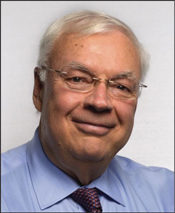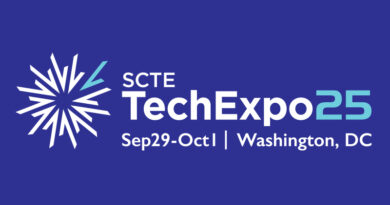Sharing the technologies to elevate our workforce
By Mark Dzuban
Innovation that reaches across platforms
We live in transformative times. In the telecommunications industry alone, the current pace of innovation requires us to move quicker than ever before. The technology we are leveraging today is facilitating knowledge retention in ways that were only envisioned five to 10 years ago. But working together, we are up to the task. By syncing and proactively managing innovation, specifications, standards, training, and deployment efforts, SCTE® and CableLabs®, along with our partners, are creating new opportunities for technology development and maintenance, as well as content creation and distribution.
At SCTE, we are increasingly focused on delivering engaging education that empowers our members and partners to apply solutions and services across a vast array of software and hardware. We recognize that communities of all sizes are thinking about their broadband needs and the networks that deliver them. The onus is on us to do just that – deliver. We can only do that when we collaborate across geographic regions and technology platforms to provide the best experience for our customers and to equip our members with the skills and tools they need to succeed.
How are we doing it? Some of the answers are in this issue of Broadband Library, where we are talking about extending broadband availability and fiber optic capacity, how to deliver a seamless Wi-Fi connectivity experience to our customers, and the changing mobile operator networks. The future looks bright, and our ongoing collaborations ensure that it only shines brighter.
Driving toward a network that connects everyone
Cable is no longer a single technology. By creating opportunities for our members to be the providers of choice in the markets they serve, we are planting the foundation for building a differentiating network that has significant capabilities far beyond entertainment. For example, some member companies deploy PON; others are focused on HFC and expanding work on DOCSIS® 4.0 technology, while other providers have also added mobile services in their markets. Our partners in this issue are looking at leveraging the tools we need to deliver these types of services in a reliable, safe, and highly secure way.
In “Minding the Gaps: A Historic Opportunity to Eliminate the Broadband Availability and Adoption Divides,” Matthew Polka, president and CEO of ACAC, explains how the “FCC’s efforts, along with Rural Utilities Service and state support programs, substantially reduced the number of unserved locations, but, by 2020 it was clear that too many households were receiving service below 100/20 Mbps, and making matters worse, government couldn’t pinpoint these homes because the FCC’s broadband data was not granular enough.” The result is that by the time of the publication of this article, there are still millions of Americans without access to adequate broadband service.
Matt suggests that there are two factors that will impact whether broadband potential is realized: 1) the Broadband Equity, Access, and Deployment (BEAD) Program requirements established by the NTIA and 2) whether the NTIA effectively manages funding. It’s a thought-provoking and well-informed assessment of the digital divide with eye-opening statistics about the gaps that remain between broadband availability and adoption.
Following on the theme of delivering optimal service and connectivity, Mario Di Dio, PhD, vice president of Software and Network Technology at Kyrio, a wholly owned subsidiary of CableLabs, discusses how adaptive route control (ARC) can bridge gaps between cellular and Wi-Fi ecosystems, in “Delivering a Better User Experience with True Wi-Fi and Mobile Cooperation.”
ARC not only gives control back to operators but empowers providers to route traffic more efficiently. Mario explains, “As a converged multiaccess technology for both mobile- and fixed-network traffic, ARC accommodates gateway and home router integration. The solution also addresses 5G ATSSS integration and will seamlessly integrate with 3GPP standards-based mobile device implementations when they become available.”
What we’re really talking about in all of these articles is digital equity, and that is also clearly addressed in “Optics in Access,” by Curtis Knittle, PhD, vice president of Wire Technologies at CableLabs. Advances in fiber optic technology are contributing to a cable network evolution as the cable industry evolves their networks to support higher capacities and more intelligent edge devices, collectively known as the distributed access architecture (DAA). You will get a good sense of the technologies we need to be focusing on from this article; Curtis discusses digital coherent modulation and the role it plays in carrying the cable industry into the future.
Building the workforce of the future
In five years, the cable industry will be noticeably different than it is today. Convergence and how effectively we can architect, engineer and operate wireless and wired networks is driving our industry toward 10G. In order to deliver on our promise of connectivity for all, it will be crucial to ensure that our workforce has the tools and training to take care of that sophisticated network.
Our business objective is to offer complete mobility to the customer, so that they can receive all of today’s and future services while on the go. By embracing 5G technology where appropriate, the cable industry is poised to continue innovation toward 10G. Using AI (artificial intelligence) and predictive measurement tools, we are going to see significant work in all the areas discussed in this issue. But that also means, for example, that as mobile operators increasingly disaggregate their networks, they are gradually upgrading their core and radio networks with a virtualized network platform that hosts software-driven network functions. All these transitions require training.
Mark Poletti, director of Mobile Networks at CableLabs, discusses the issue of how best to equip mobile operators to succeed in “Mobile Operator Networks in Transition.” As Mark notes, “We are seeing an industry trend of virtualization and cloudification of 5G core and radio access network (RAN) functions onto a shared compute platform architecture.” This statement puts a red line under the need to continue to provide the knowledge and skills that we all need to not only provide excellence in service, but to recruit and retain members of our workforce.
Not only do we need to provide leading-edge training to maximize our teams’ learning potential, but we must look to the future and fill the pipeline with qualified workers. We are responding to both mandates with a variety of Learning & Development initiatives leveraging the same technologies that our industry relies on, specifically machine learning and AI. Our data-oriented operations continue to evolve with such approaches as learning management systems (LMS) for a multi-layered approach to learning, which includes MicroLessons, VirtuLearn®, and Boot Camps, as well as the practical application of systems like PNM (proactive network maintenance) tools.
A notable example of this is the recent awarding to SCTE of a patent for “Systems and Methods for Remote Evaluation of Craft Skills,” which provides feedback in real time using PNM tools. The patent embodies several different systems of the training process and is a real endorsement of the innovative training SCTE provides to technicians, and in support of the health of our industry.
The point is that by collaborating on how we architect, engineer and operate wireless and wired networks, and maintain learning and development, we are building the foundation for a differentiated network that elevates our workforce as well as the experiences of our customers. As Mark Poletti notes in his article, “partnerships are key to mobile operator success.” Partnerships are also key to how services are defined and delivered and in how we train and upskill our workforce. When we work together, the beneficiary is the community.
Mark L. Dzuban
President and CEO, SCTE® a subsidiary of CableLabs®
mdzuban@scte.org
Mark Dzuban is president and CEO of SCTE, a global not-for-profit member organization driving the acceleration and deployment of technology in the cable industry. With a career spanning more than 50 years, Dzuban has been named a Cable TV Pioneer and Cable Center Innovation Laureate, and received the Vanguard Award for Cable Operations Management. Since joining SCTE, Dzuban has transformed the organization into the industry’s applied science leader and has expanded its training, standards, and energy management programs.




